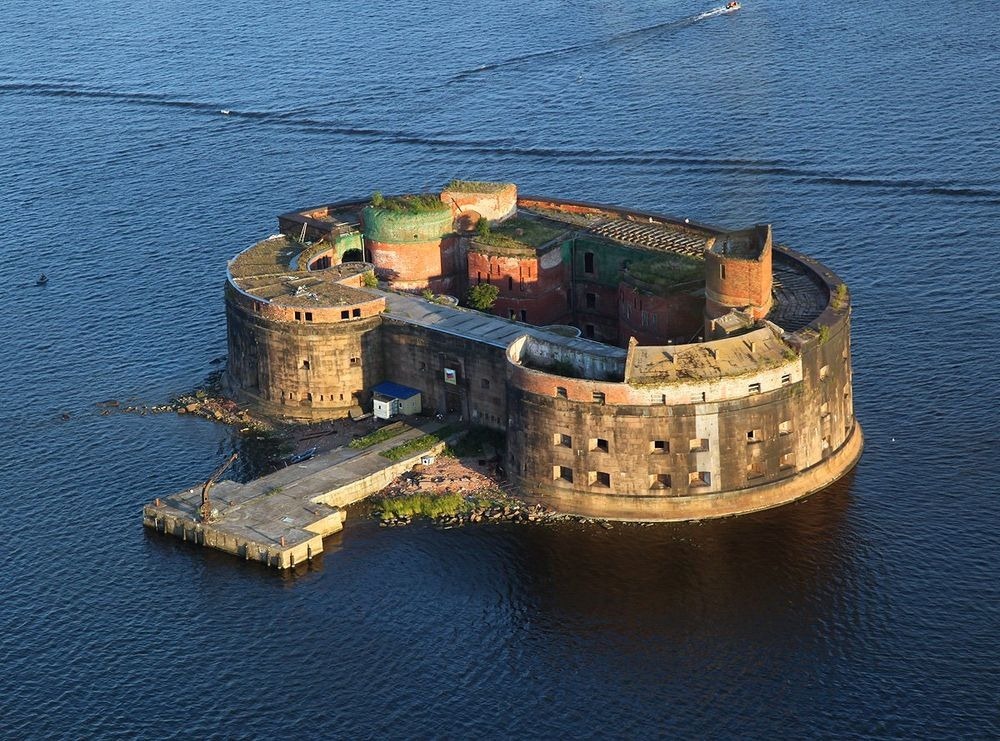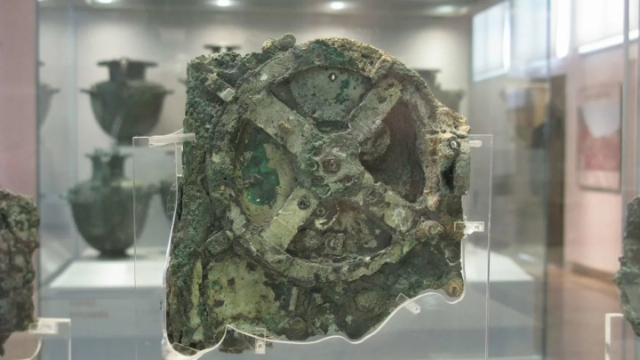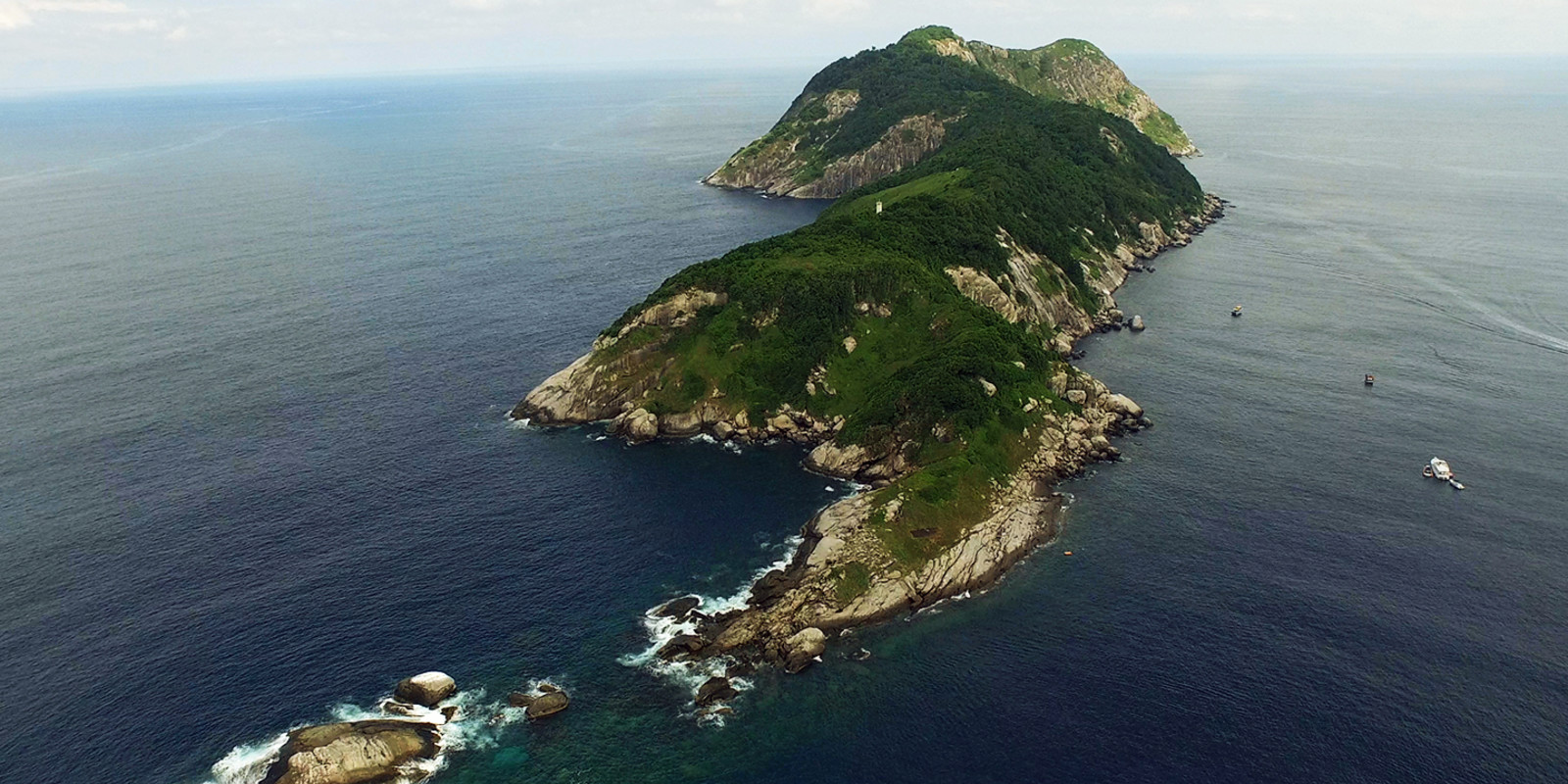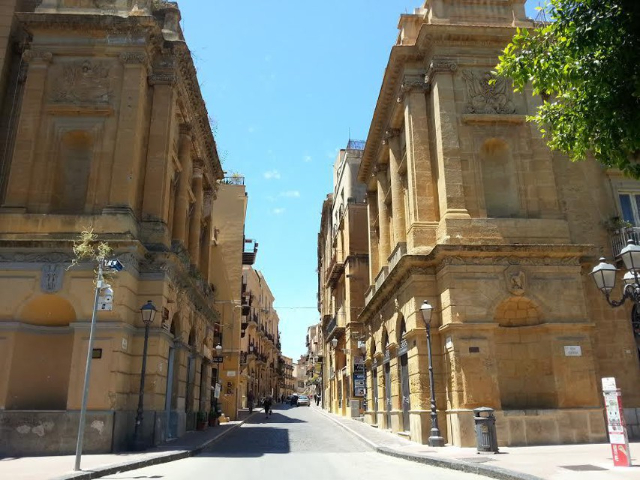After Saint Petersburg was founded, in 1703, construction of a number of forts was initiated. They were strategically placed across the Gulf of Finland, on the Baltic Sea to guard the city and fortify the entire area. The decision was made in the midst of the Great Northern War that lasted till 1721.
The forts together formed an almost impregnable defense against enemy attacks from the sea. And over the next two centuries, Russia had built over 40 forts between the southern and northern shores of the Gulf of Finland, securing the area even more.Built between 1838 and 1845, Fort Alexander was commissioned by Emperor Nikolay I and named after his brother, Emperor Alexander I. And like many other in the gulf, it was erected on top of an artificial island.Designed and intended to be a military base, the fort’s imposing presence alone was enough to prevent anyone attempting to invade St. Petersburg. The oval-shaped installation measures 295 by 197 feet in total, with three floors, a yard in the center and a room that can house 1,000 soldiers. And though the soldiers never actually participated in any combat, the fort itself played a key role in the Crimean War preventing the attempts of the Royal Navy and French fleets to enter the Russian naval base in Kronstadt. After that, Fort Alexander was used as a deterrent only two more times: in 1863, when an attack by the British Empire was expected, and finally in the Russo – Turkish War (1877-1878).But, by the end of the 19th century, the fort became somewhat obsolete in its military significance in terms of defense against modern artillery and high explosive shells. It was used only for ammunition storage.A few years later, with the discovery of the plague pathogen (Yersinia bacteria )in 1894 by Alexandre Yersin, a special Commission on the Prevention of Plague Disease was formed by the Russian government.
All they’ve needed was a proper spot to expedite the research. And given the fact that Fort Alexandria was no longer used as a military base and the site’s isolation from the mainland, it was the perfect place where Russian scientists could study all sorts of deadly viruses, like cholera, tetanus, typhus, scarlatina and Streptococcus infections. But their main focus was to be the plague and preparation of a serum and vaccine.The Imperial Institute of Experimental Medicine commissioned the fort as a new research laboratory in January 1897, and with a substantial donation given by Duke Alexander Petrovich of Oldenburg, the base was refurbished to serve its new purpose.The scientists used horses to carry out their research which wasn’t always successful. And during the course, three pneumonic and bubonic plague cases appeared among the staff members resulting in two casualties, one of them being the director of the laboratory Dr. V.I.Turchaninov-Vyzhnikevich. The bodies were cremated in the furnaces of the fort due to the high risk of infecting others.But overall, the Fort Alexandria facility was a success, developing serums against cholera, tetanus, and typhus. In 1917, after the Communist takeover, the laboratory was closed and the fort was handed over to the Russian Navy. The research was transferred to institutes in Moscow and Petrograd. Fort Alexandria was officially abandoned in 1983. Today it is more known as the Plague Fort.
(By abandonedspaces.com )













